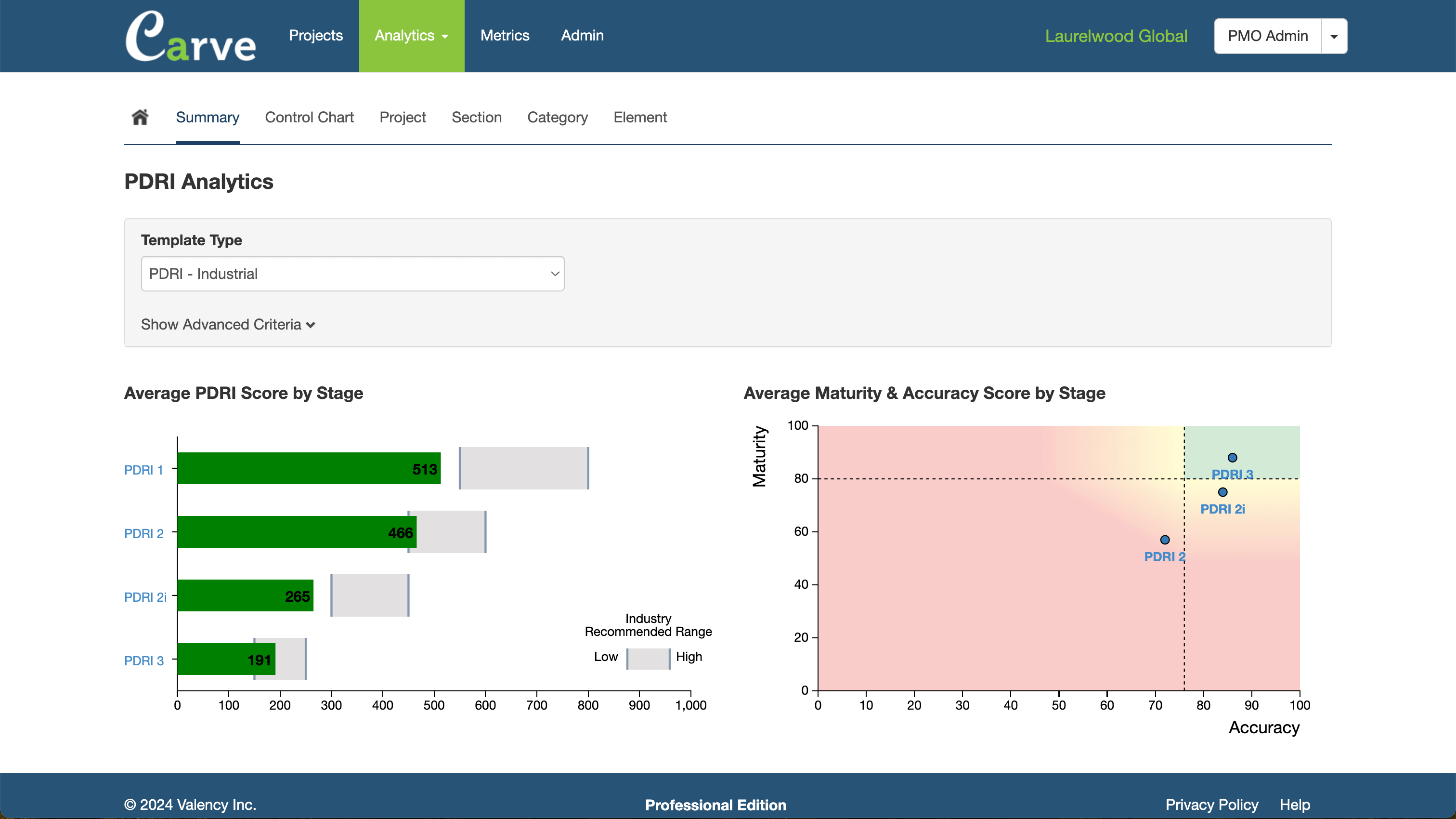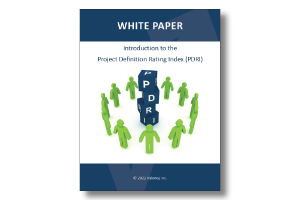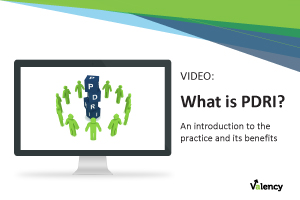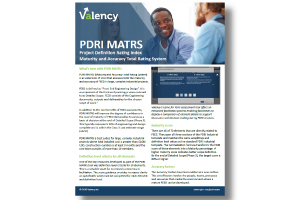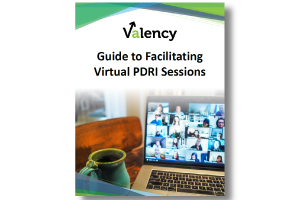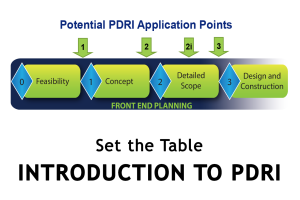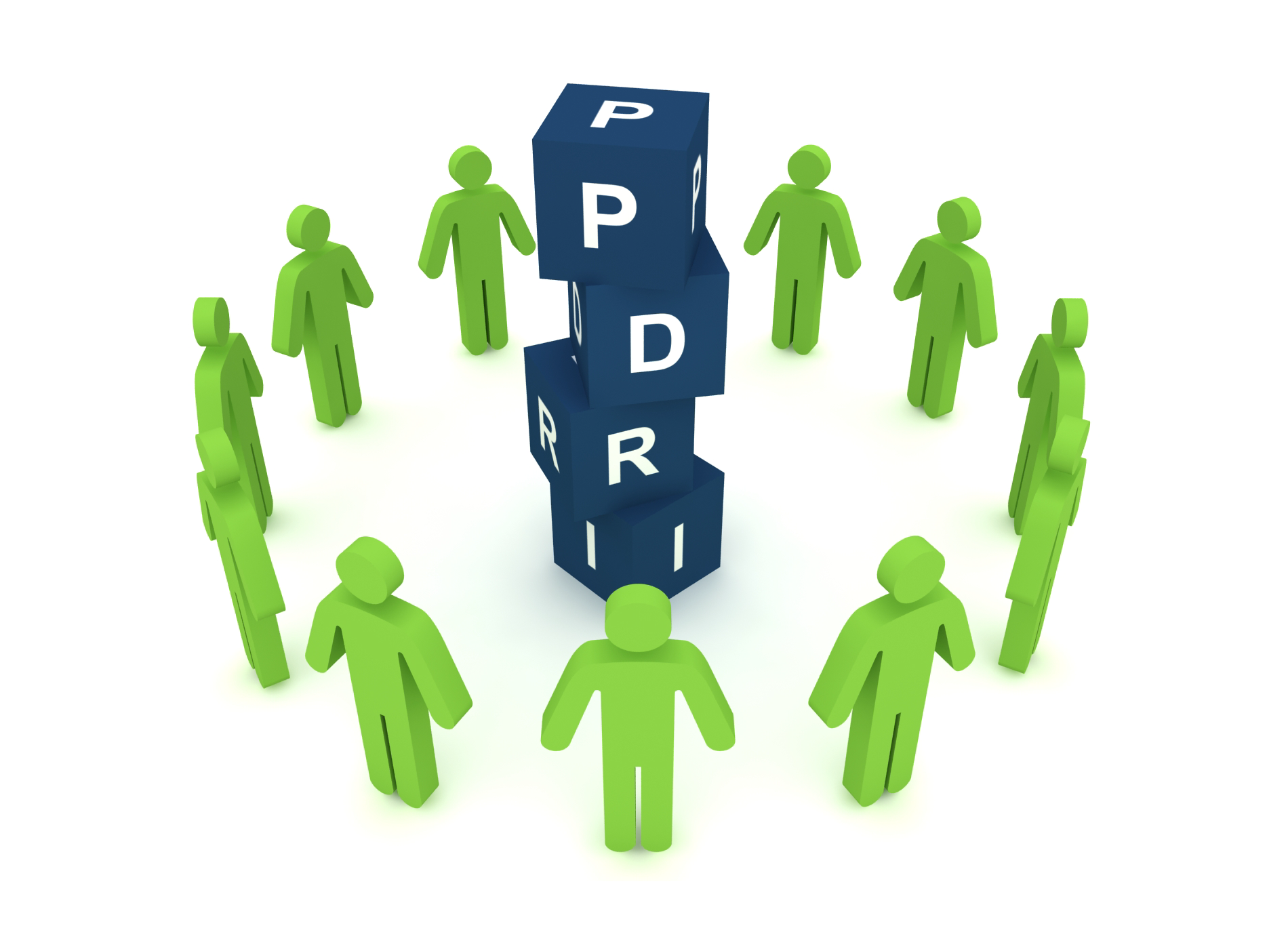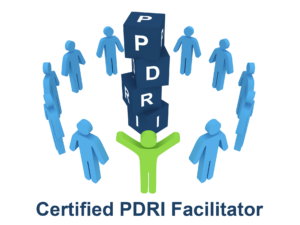Resource
Project Definition Rating Index (PDRI)
The Project Definition Rating Index (PDRI) is a methodology used for capital projects to measure the degree of scope definition, identify gaps, and take appropriate actions to reduce risk during front end planning.
PDRI is used at multiple stages in the front end planning process. As a project progresses, identified gaps will continue to be addressed until a sufficient level of definition is achieved for the project to successfully proceed to detailed design and construction.
A neutral facilitator leads a PDRI Assessment with the project team. Each element is scored and related comments and action items are captured. The PDRI facilitator reviews the final results with the team and prepares a summary report to be shared with all project stakeholders.
METHODOLOGY
What
is PDRI?
METHODOLOGY
What
is PDRI?
The Project Definition Rating Index (PDRI) is a methodology used for capital projects to measure the degree of scope definition, identify gaps, and take appropriate actions to reduce risk during front end planning.
PDRI is used at multiple stages in the front end planning process. As a project progresses, identified gaps will continue to be addressed until a sufficient level of definition is achieved for the project to successfully proceed to detailed design and construction.
A neutral facilitator leads a PDRI Assessment with the project team. Each element is scored and related comments and action items are captured. The PDRI facilitator reviews the final results with the team and prepares a summary report to be shared with all project stakeholders.
Valency’s project assurance solution
Carve for PDRI
Carve for PDRI
- Rapidly adopt the PDRI methodology
- Ensure consistency in PDRI Assessments
- Clearly communicate results to senior leaders
- Configure PDRI Assessment templates
- Leverage out-of-the-box PDRI analytics
Additional
Resources
Resources
Related
Courses & Webinars
Courses & Webinars

PDRI Principles & Practices
Course
Certified PDRI Facilitator Program
Certification
Additional information
Frequently Asked Questions
Frequently Asked Questions
Why is PDRI critical?
Poor scope definition is recognized as one of the leading causes of project failure, resulting in cost and schedule overruns and long term operational issues. As a result, front end planning is one of the most important processes in the construction and operation of a capital asset. The PDRI methodology is proven to reduce risk in capital project delivery by promoting rigorous scope definition and a collaborative review process during front end planning. Using the PDRI methodology will help your project teams improve scope definition, alignment, and transparency on identified gaps. This helps to equip all project stakeholders to better mitigate risks, predict potential issues, and overcome costly problems down the road.
Who uses PDRI?
Owners with large capital expenditures in construction-related projects are the leading users of PDRI.
Engineering Firms & Contractors also use PDRI. It is used as an alignment tool in the development of an Owner’s business objectives, to clarify requirements, improve cost and schedule estimates, and coordinate execution planning.
Contractors also use PDRI to assist in risk assessment for a Request for Proposal (RFP) on a project where scope definition has been completed by the Owner or another engineering firm.
When is PDRI used in the project lifecycle?
PDRI can be used at multiple points during front end planning, and normally coincides with the completion of a stage. Organizations that adopt PDRI as part of their project governance typically require a minimum of two PDRI Assessments.

How is PDRI structured?
The PDRI methodology supports a comprehensive assessment of scope definition. Templates are organized in three sections for systematic assessment of the:
- Basis of Project Decision: the business objectives and drivers
- Basis of Design: processes and technical information required
- Execution Approach: for executing the project construction and closeout
Each section is broken down into categories and elements. The element is the lowest level of the index where the assessment of scope definition is conducted.
Is PDRI applicable to all project types?
There are five industry-validated PDRI templates that are each focused on a specific industry sector. All templates include risk factors relating to new construction (greenfield) and renovation and revamp (brownfield) projects.
The Industrial template is targeted for projects that provide an output in terms of assemblies, sub-assemblies, chemical compounds, electricity, food, or other marketable goods. Examples include power plants, chemical plants, oil & gas production, refineries, water and waste treatment, and manufacturing facilities.
The Building template is designed for commercial building projects. Examples include offices, schools, medical facilities, institutional buildings, warehouses, parking structures, and research facilities.
PDRI for Infrastructure Projects
The Infrastructure template is targeted for projects that involve linear construction with extensive public interface and environmental impact considerations. Examples include railways, highways, pipelines, transmission and distribution and canals.
PDRI for Manufacturing & Life Sciences (MLS) Projects
The Manufacturing & Life Sciences (MLS) template is targeted for projects with both process and building programming scope. This template includes specific considerations for technology (enterprise & control systems), regulatory compliance, extensive commissioning, and environmental controls.
The Mining template is designed for greenfield mining projects and encompasses the specific considerations involved in these complex projects such as limited infrastructure, uncertainty of site conditions, geo-political risk, and environmental constraints.
What is PDRI MATRS?
PDRI MATRS (Maturity and Accuracy Total Rating System) is an extension of the PDRI Industrial template that assesses both the maturity and accuracy of FEED in large, complex industrial projects. It is best suited for large, complex industrial projects where total installed cost is greater than $10M USD, construction duration is at least 9 months, and the core team consists of more than 10 members.
FEED is defined as “Front End Engineering Design”. It is a component of the front end planning process referred to as detailed scope (Phase 3).
In addition to the core benefits of PDRI Assessments, PDRI MATRS will improve the degree of confidence in the level of maturity of FEED deliverables to serve as a basis of decision at the end of detailed scope (Phase 3). This typically represents 30% of engineering and design complete and is within the Class 3 cost estimate range (AACE).
Definition level criteria for all elements
One of the key resources developed as part of the PDRI MATRS tool was definition level criteria for all elements. This is a valuable asset for increased consistency in facilitation. The score guidance provides increased clarity on specifically what must be completed for each element and definition level.
Maturity Score
There are 46 of 70 elements that are directly related to FEED. They span all three sections of the PDRI Industrial template and maintain the same weightings and definition level values as the standard PDRI Industrial template. The normalization formula transforms the PDRI score of these elements into a maturity percentage. A higher maturity score indicates better scope definition. By the end of detailed scope (Phase 3), the target score is 80% or higher.
Accuracy factors
The accuracy factors have been added as a new section. This set of factors involve the people, teams, processes and resources that create the environment where a mature FEED can be developed. There are 27 factors organized into four categories. Their weightings were determined based on CII research results and are displayed as a percentage. The target score at the end of detailed scope (Phase 3) is 76%. The higher the score, the better.
Facilitating a PDRI MATRS Assessment
Valency has incorporated the latest PDRI MATRS template into Carve – our web-based project assurance platform. For a detailed view of how it works, click here to watch the tutorial.
Does PDRI add value to small projects?
PDRI is effectively used for projects of all sizes, including small, large, and mega projects. Templates such as PDRI for Small Industrial and PDRI for Small Infrastructure cater specifically to projects with lower costs (under $10-20M USD), a smaller scope, and fewer resources. These templates allow for a more concise and efficient review of the project scope to ensure that even smaller projects can achieve high levels of definition and success.
Where does PDRI originate?
The Construction Industry Institute (CII) recognizes front end planning as the single biggest factor in controlling cost and schedule in capital projects. For over 20 years CII’s research and development has focused on helping project teams use the front end planning process and tools to create an environment for success. The PDRI is one of the leading toolsets that resulted from this research focus.

